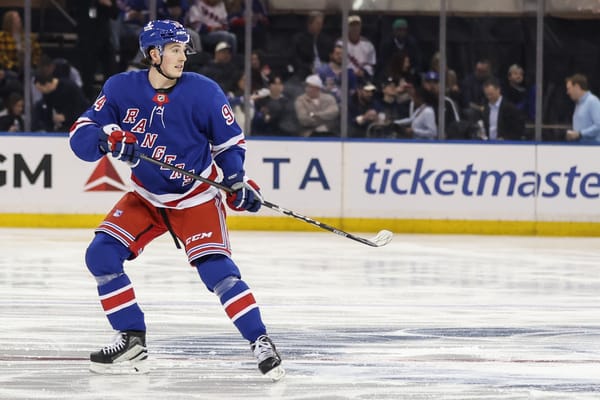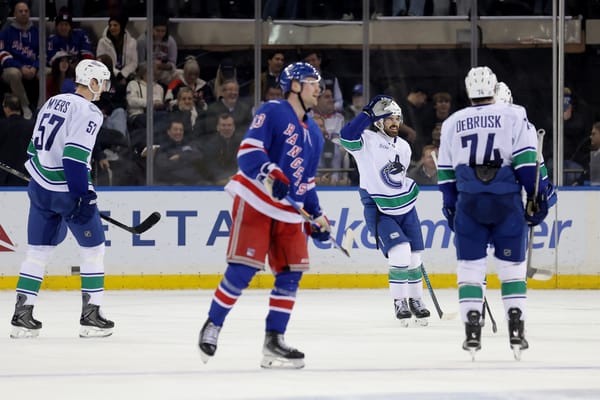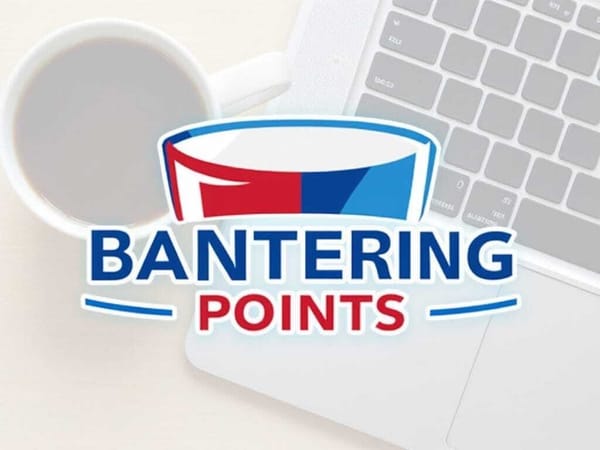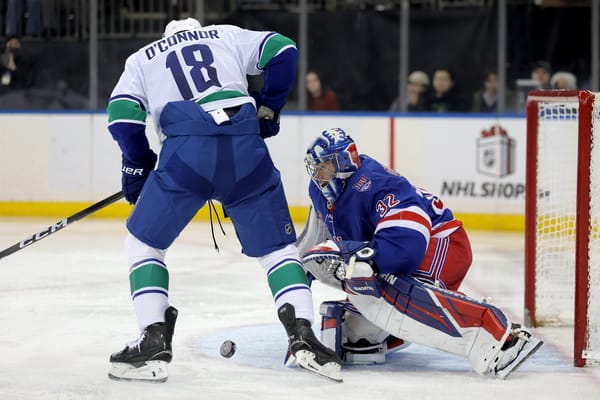2022 Report Card: Barclay Goodrow
After winning a pair of Stanley Cups with the Tampa Bay Lightning, Goodrow cashed in on a long term contract and took his talents to the Big Apple
Off all the players on New York’s roster, Barlcay Goodrow had one of the longest, most winding roads to arrive here. Before breaking into the professional ranks, Goodrow had gone undrafted three consecutive years from 2011-2013. He attended prospect camps with the Carolina Hurricanes, Los Angeles Kings, and Detroit Red Wings following each of those three drafts, but was unable to secure an NHL contract and ended up spending a total of five seasons in the OHL.
After signing with the San Jose Sharks in early 2014, he spent his first three pro seasons bouncing up and down between NHL and AHL, playing 77 NHL and 148 AHL games before finally making the NHL for good in 2017-18. Goodrow joined the Tampa Bay Lightning at the 2020 trade deadline just prior to the COVID-19 induced pause, and was a member of their back to back championships.
Prior to the opening of free agency, the Rangers traded what ended up being the 223rd pick of the 2022 Entry Draft to the Lightning for Goodrow’s negotiating rights. Chris Drury made it clear that Goodrow was a player the Blueshirts had targeted well in advance of free agency, and hammered out a six year deal worth a shade under $22 million for Goodrow. Upon signing that deal, early projections looked pretty grim:
With the #NYR officially signing Barclay Goodrow to a six year contract, here's a read all about his game and what he brings to the Rangers, and whether this is a cost-effective move. https://t.co/wBTNFzGTay pic.twitter.com/dN2ty7juE7
— Shayna (@hayyyshayyy) July 22, 2021
Boxcar Stats: 79 GP, 13 G, 20 A, 116 SOG, 16:42 TOI/GP, 69 PIM, -5 Penalty Differential, +10 On-Ice Goal Differential
5-on-5 Analytical Metrics: 1.44 Points/60, -3.74 Relative CF%, -4.90 Relative SF%, 7.19 Relative GF%, -3.93 Relative Expected GF%, -1.41 Relative SCF%, 104.2 On-Ice PDO, 2.7 GAR
Playoff Stats: 1 Point, 15:00 TOI/GP, -10.30 Relative CF%, -14.90 Relative xGF%, -2 On-Ice Goal Differential
Upon arriving in New York, Goodrow was expected to bring certain elements to the table. As the Rangers opted against naming a captain for fourth consecutive season, Goodrow ended up as one of six players named as an alternate captain at the conclusion of training camp. Goodrow was the only player on the roster with championship pedigree, but even with that experience, being named an alternate captain was a shock to many.
As for his on-ice contributions, Goodrow’s reputation was that of a versatile, defensively responsible forward. He could align at wing or center and could play anywhere in the lineup. His skillset was presumed to be best utilized in a defense-first bottom six role, but Goodrow spent time up and down Gerard Gallant’s lineup throughout the season. Reputation would lead one believe that Goodrow became a defensive specialist, but the numbers behind Goodrow’s play bear out quite the opposite:
There’s some interesting nuggets of information to glean when looking at Goodrow’s season. In spite of being in the red across the board in terms of shot and scoring chance based metrics relative to his teammates, Goodrow was one of the team’s better drivers of on-ice goal differential. His 5-on-5 goal differential and relative Goals For% were both top five on the team among players who spent the majority of the season with the Rangers.
Significantly outperforming the shot and chance based metrics is usually a trend seen in players with some sort of elite puck skill, whether that be passing or shooting, but that can’t be said for Goodrow. The other five Rangers’ forwards to positively affect the team’s goal differentials (Panarin, Kakko, Strome, Zibanejad, and Kreider) all positively affected their shot and chance differentials as well. Goodrow sticks out like a sore thumb here.
Goodrow spent most of his time with the Lightning on their 3rd line, and if you asked a Rangers fan what role he played for them this season, they’d most likely tell you he was a jack of all trades that spent most of his time in the bottom half of the lineup. Contrary to that notion, Goodrow was fifth in time on ice for both 5-on-5 and all situations over the course of the season.
While the trade deadline additions of Andrew Copp and Frank Vatrano pushed Goodrow back to a bottom six role, the constant line juggling in the early parts of the season led to Goodrow skating more minutes than a majority of New York’s forwards. The team’s rancid forward depth was one of the issues that plagued them until the deadline. Goodrow can be a useful player under certain circumstances, but a team where he’s basically skating second line minutes isn’t a team that will be very successful.
That issue was remedied by the time the playoffs began, as Goodrow found himself on the fourth line skating alongside Kevin Rooney and Ryan Reaves for Game 1 against Pittsburgh. During the second period of that game, Goodrow broke his foot blocking a shot and would be forced out of the lineup for the remainder of the opening round series. Goodrow ended up missing 11 games before returning for Game 6 of the second round against Carolina, and he found himself back in the 4th line mix alongside Reaves and Tyler Motte.
For a player that was brought in part due to his playoff experience, missing more than half of the playoffs and being ineffective the remainder of the time wasn’t ideal. Goodrow missed about three weeks with his injury and was definitely less than 100% upon returning to the lineup, so ragging on him for nine subpar games isn’t a particular fruitful exercise in this case.
Final Thoughts:
Grading a player in Goodrow’s circumstances can be tough. It’s not his fault the Rangers signed him to a contract paying him a lot more than he’s worth, so balancing how to grade him relative to his salary vs what one should reasonably expect out of him is difficult. Goodrow isn’t the first depth player on a Stanley Cup champion to immediately cash in and under perform relative to his new contract, and he won’t be the last.
New York is already in the midst of a major cap crunch. Larry Brooks has floated the idea of the team moving on from Goodrow after the 2022-23 campaign with a handful of their young players due for new contracts. Goodrow can be a quality depth piece for a winning hockey team. His place on teams that made at least the Conference Finals in each of the last four seasons speaks to that.
Unfortunately, quality depth pieces can be found for a lot cheaper than the Rangers are paying Goodrow. Shrewd salary cap management is the name of the game due to the financial havoc the COVID-19 pandemic has caused for the NHL. Goodrow will need to bring more to the table moving forward as the Blueshirts look to build on their success from this past season. If he can’t, he won’t be around much longer.
Author Grade: D
Masthead Average: C (3 C+’s, 2 C’s, 2 D’s)
*All Data via Natural Stat Trick and Evolving Hockey





